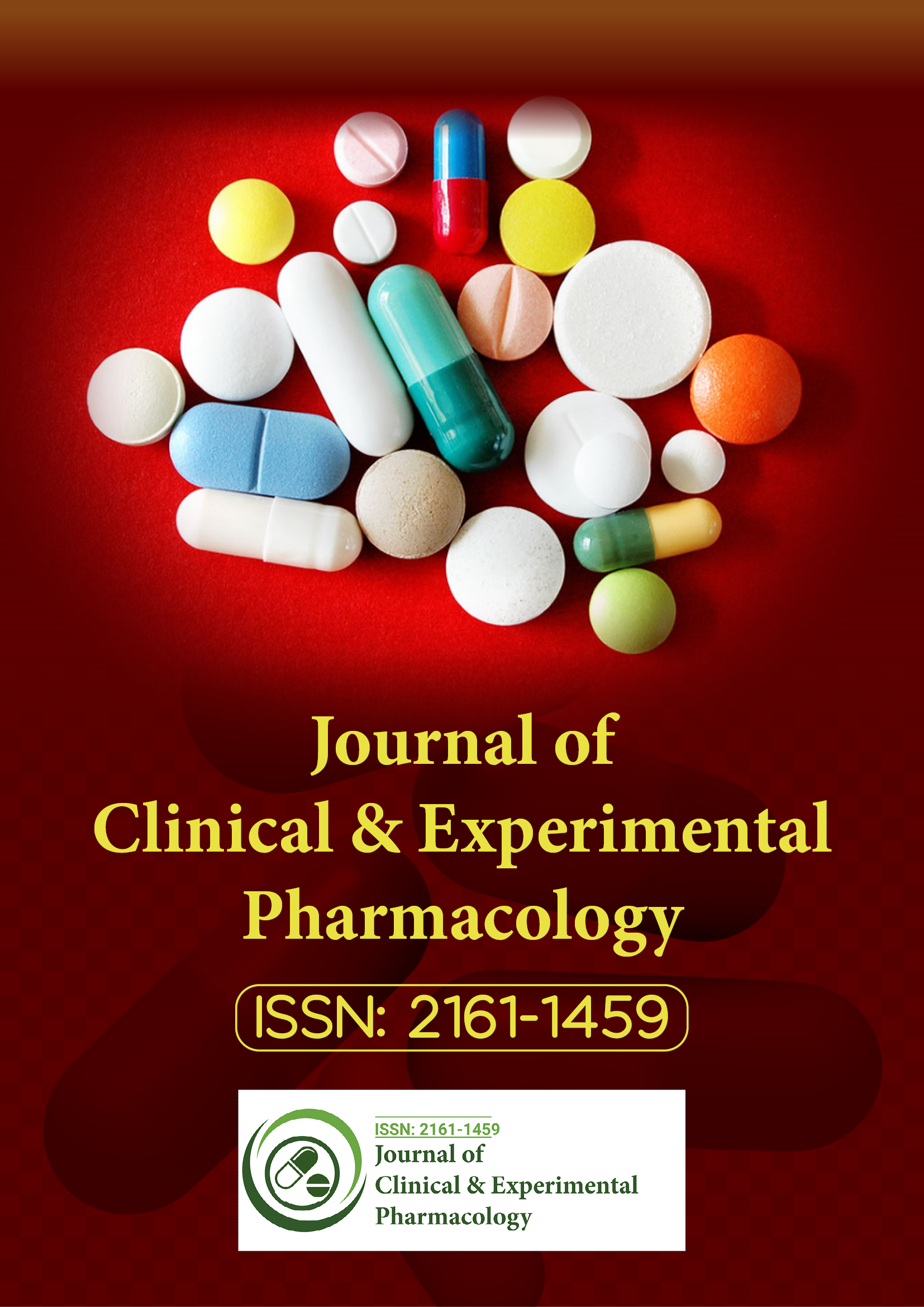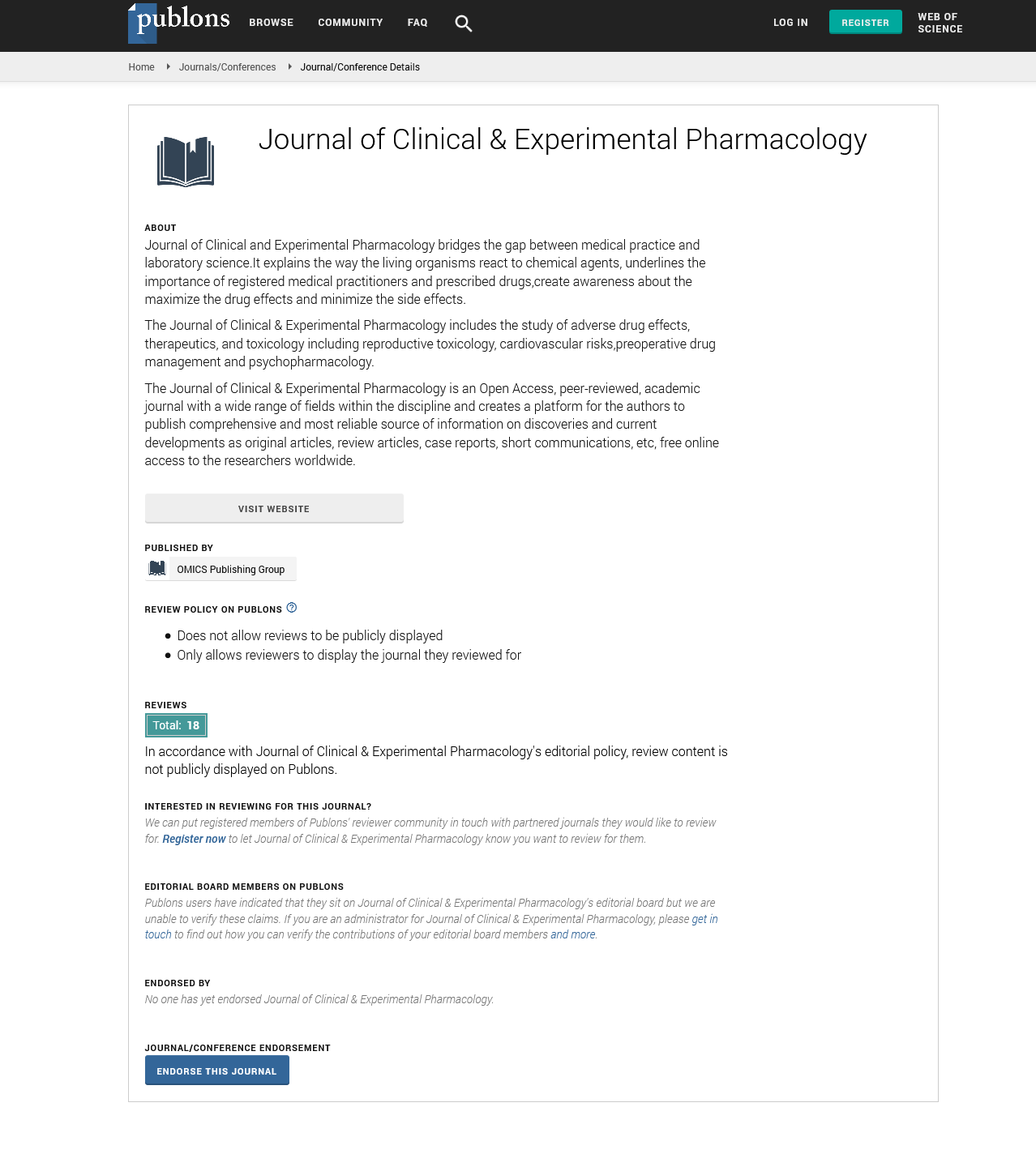Indexed In
- Open J Gate
- Genamics JournalSeek
- China National Knowledge Infrastructure (CNKI)
- Ulrich's Periodicals Directory
- RefSeek
- Hamdard University
- EBSCO A-Z
- OCLC- WorldCat
- Publons
- Google Scholar
Useful Links
Share This Page
Journal Flyer

Open Access Journals
- Agri and Aquaculture
- Biochemistry
- Bioinformatics & Systems Biology
- Business & Management
- Chemistry
- Clinical Sciences
- Engineering
- Food & Nutrition
- General Science
- Genetics & Molecular Biology
- Immunology & Microbiology
- Medical Sciences
- Neuroscience & Psychology
- Nursing & Health Care
- Pharmaceutical Sciences
Commentary - (2025) Volume 15, Issue 4
Molecular and Cellular Pharmacology: Unraveling Drug Actions at the Fundamental Levels of Biology
Mitchell Nelson*Received: 01-Aug-2025, Manuscript No. CPECR-25-29875; Editor assigned: 04-Aug-2025, Pre QC No. CPECR-25-29875 (PQ); Reviewed: 19-Aug-2025, QC No. CPECR-25-29875; Revised: 27-Aug-2025, Manuscript No. CPECR-25-29875 (R); Published: 05-Sep-2025, DOI: 10.35248/2161-1459.25.15.492
Description
Molecular and Cellular Pharmacology investigates how drugs interact with biological systems at the molecular and cellular levels. It focuses on identifying drug targets, understanding signaling pathways and analyzing the cellular processes influenced by therapeutic agents. This discipline provides the mechanistic basis for drug action and serves as a foundation for developing innovative therapies across a wide range of diseases.
At the molecular level, pharmacology examines interactions between drugs and biomolecules such as receptors, enzymes, ion channels and nucleic acids. Receptors represent the most common targets, with G-Protein Coupled Receptors (GPCRs) being of particular importance due to their widespread involvement in physiological processes. Drugs designed to modulate receptor activity can act as agonists, antagonists, or modulators, thereby influencing cellular signaling. Advances in structural biology, including techniques like cryo-electron microscopy, have allowed researchers to visualize receptor-drug complexes, offering unprecedented insights into molecular interactions.
Enzymes also serve as critical drug targets. Inhibitors of key enzymes can block pathogenic pathways, as seen in protease inhibitors for viral infections or kinase inhibitors for cancers. Understanding enzyme kinetics and mechanisms of inhibition is an essential component of molecular pharmacology, guiding rational drug design. Similarly, ion channels play roles in neurological and cardiovascular conditions, where selective blockers or openers modulate electrical signaling and restore normal physiological function.
At the cellular level, pharmacology examines how drugs influence processes such as proliferation, differentiation, apoptosis and intracellular signaling cascades. Cellular pharmacology integrates concepts from biochemistry, physiology and molecular biology to analyze how drug exposure alters cellular functions. For example, chemotherapeutic agents target rapidly dividing cancer cells by disrupting DNA replication, while immunomodulatory drugs influence cytokine production and T-cell activation. Such insights help bridge the gap between molecular interactions and systemic therapeutic outcomes.
The study of intracellular signaling is another cornerstone of molecular and cellular pharmacology. Drugs often act by altering pathways such as MAPK, PI3K/AKT, or JAK-STAT, which regulate diverse biological processes. Dysregulation of these pathways is implicated in diseases ranging from cancer to autoimmune disorders. By mapping how drugs modify these signaling networks, researchers can identify novel targets and refine therapeutic strategies.
Emerging techniques have expanded the scope of molecular and cellular pharmacology. High-throughput screening allows the simultaneous testing of thousands of compounds against specific molecular targets. This approach generates large datasets that, when coupled with bioinformatics, accelerate drug discovery. Single-cell analysis techniques have further enhanced our understanding of cellular pharmacology by revealing heterogeneity in drug responses within populations of cells, shedding light on resistance mechanisms and individual variability.
Pharmacogenomics complements molecular and cellular pharmacology by explaining how genetic variations influence drug response at the cellular level. Mutations in receptors, enzymes, or transporters can alter drug binding, metabolism, or efficacy. Integrating pharmacogenomic data with molecular pharmacology enables precision medicine, ensuring therapies are tailored to the genetic profile of patients.
Another expanding frontier involves drug delivery systems at the cellular scale. Nanoparticles, liposomes and antibody-drug conjugates are engineered to deliver drugs directly to target cells or organelles, improving therapeutic outcomes while minimizing off-target effects. Cellular pharmacology provides the framework for understanding how these delivery systems interact with cells, are internalized and release their cargo.
Molecular and cellular pharmacology also contributes to the evaluation of drug toxicity. Understanding how drugs disrupt cellular homeostasis, generate reactive oxygen species, or impair mitochondrial function is essential for predicting adverse effects. This mechanistic insight supports the development of safer drugs and guides regulatory decisions.
Importantly, this field is highly interdisciplinary. It integrates advances from genetics, structural biology, systems pharmacology and chemical biology to provide a holistic understanding of drug action. By bridging molecular detail with cellular function, it helps explain not only therapeutic benefits but also mechanisms of resistance and toxicity.
Conclusion
Molecular and cellular pharmacology provides the scientific basis for understanding how drugs exert their effects at the most fundamental levels of biology. By elucidating interactions with receptors, enzymes, ion channels and intracellular signaling pathways, it contributes directly to the design of innovative therapies. Emerging technologies such as structural biology, high-throughput screening and single-cell analysis continue to expand its impact. As the field advances, molecular and cellular pharmacology will remain central to bridging basic research with clinical application, shaping the future of drug discovery and personalized medicine.
Citation: Nelson M (2025). Molecular and Cellular Pharmacology: Unraveling Drug Actions at the Fundamental Levels of Biology. J Clin Exp Pharmacol. 15:492.
Copyright: © 2025 Nelson M. This is an open-access article distributed under the terms of the Creative Commons Attribution License, which permits unrestricted use, distribution and reproduction in any medium, provided the original author and source are credited.

